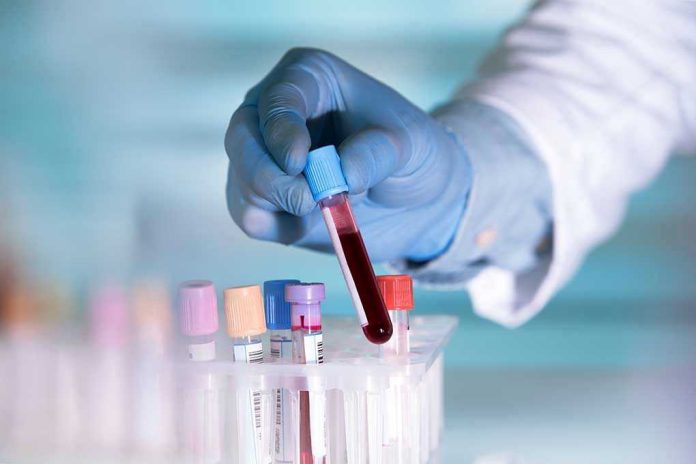
A groundbreaking blood test that can detect dozens of cancer types before symptoms appear just completed the largest clinical trial in history, potentially revolutionizing how Americans catch deadly diseases early—but questions remain about whether this innovation will be affordable and accessible to working families or become another expensive tool reserved for the elite.
Story Highlights
- PATHFINDER 2 trial tested 35,878 Americans with revolutionary multi-cancer blood screening technology
- Test detected cancer signals in nearly 1% of participants, increasing detection seven-fold over standard screening
- Single blood draw can screen for multiple cancer types simultaneously, unlike traditional methods
- Critical questions remain about cost, insurance coverage, and real-world patient outcomes
Massive Clinical Trial Validates Revolutionary Technology
The PATHFINDER 2 trial represents the largest assessment of multi-cancer early detection technology ever conducted, enrolling 35,878 participants across 50 sites in the United States and Canada. GRAIL’s Galleri test identified cancer signals in 216 cases among 23,161 participants with complete follow-up data, representing a 0.93% detection rate. This liquid biopsy technology analyzes DNA-methylation markers in blood plasma from cancer cell fragments, providing a comprehensive screening approach that traditional methods cannot match.
The study’s design allowed participants to continue standard recommended screenings like mammography and colonoscopy while adding the multi-cancer blood test. Results showed more than a seven-fold increase in cancer detection when the MCED test supplemented U.S. Preventive Services Task Force A and B recommended screenings. This approach addresses a critical gap in American healthcare, where traditional screening programs cover only five cancer types, leaving the majority without established early detection methods.
Technology Promises Earlier Detection for Overlooked Cancers
Unlike conventional screening that targets single cancer types, GRAIL’s Galleri test can simultaneously detect signals from dozens of cancer varieties through one blood draw. The technology emerged from decades of research into circulating tumor DNA detection, where scientists discovered that cancers shed identifiable DNA fragments into the bloodstream. This advancement particularly benefits Americans facing cancers without established screening protocols, potentially catching deadly diseases at treatable stages rather than after symptoms appear.
The PATHFINDER 2 results build upon earlier research published in The Lancet, demonstrating that multi-cancer detection can be integrated into clinical practice without overwhelming healthcare systems with false positives. Recent October 2025 studies in Nature and Science Translational Medicine further validated liquid biopsy applications, showing how blood-based monitoring can track treatment response and reveal immune activity invisible to standard imaging techniques.
Critical Questions About Access and Real-World Impact
Despite promising clinical trial results, significant challenges remain regarding insurance coverage, healthcare system implementation, and whether earlier detection actually improves patient outcomes. A new national clinical trial specifically investigates whether multi-cancer blood tests translate detection capability into better survival rates and reduced cancer deaths. Without demonstrated clinical utility, widespread adoption faces obstacles from insurers and healthcare payers concerned about cost-effectiveness.
Breakthrough blood test could spot dozens of cancers before symptoms appear https://t.co/jq9nONIqS9 #FoxNews
— James Rodimer (@JRodimer) October 21, 2025
Access equity emerges as a fundamental concern, as expensive screening technologies may initially serve affluent populations while remaining unavailable to working-class Americans. Healthcare systems must develop protocols for managing positive cancer signals, including diagnostic follow-up procedures and patient counseling approaches. The potential for false positives to cause anxiety and trigger unnecessary invasive procedures adds complexity to implementation decisions across medical practices nationwide.
Sources:
Break Through Cancer Press Releases
The Largest Study of a Multi-Cancer Early Detection Blood Test
Breakthrough Cancer Therapy Moves to Phase 2 Trials
GRAIL PATHFINDER 2 Results Show Galleri Multi-Cancer Early Detection Blood Test



